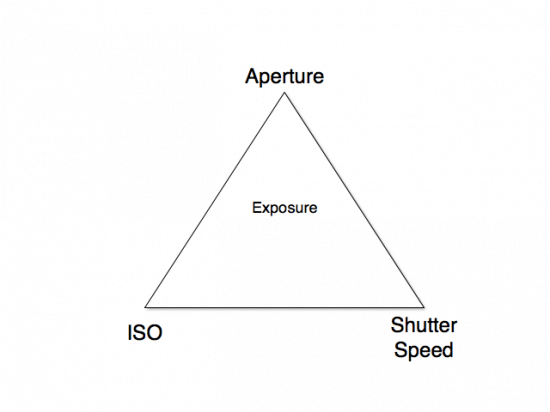Exposure Triangle
You or your camera can control exposure by changing the amount of light that reaches your sensor. The three things that you can change to control exposure are called aperture, shutter speed and ISO.

Shutter speed and aperture control the amount of light that hits your sensor. A third element, ISO, dictates how sensitive your sensor is to the light that hits it.
Shutter speed refers to the length of time, in seconds or fractions of a second, that the shutter is open for when you press the shutter button. The longer the shutter is open for, the more light hits the sensor and this increases the exposure to make the photo brighter. Shorter shutter durations means that the amount of light reaching the sensor is reduced and the exposure is less.
Aperture refers to an opening in your lens. The size of this opening can be changed. If it is smaller it allows less light to hit the sensor, if it is larger it allows more light to hit the sensor. Making the aperture larger increases the exposure, and making it smaller reduces the exposure.
ISO is a setting that alters the sensor’s sensitivity to light. A higher ISO number makes your sensor more sensitive to light and it therefore requires less light to make a brighter image, lower ISO numbers need more light to create an image. Increasing the ISO increases the exposure, and using a lower ISO number reduces the exposure.
